 Chair.
Chair.

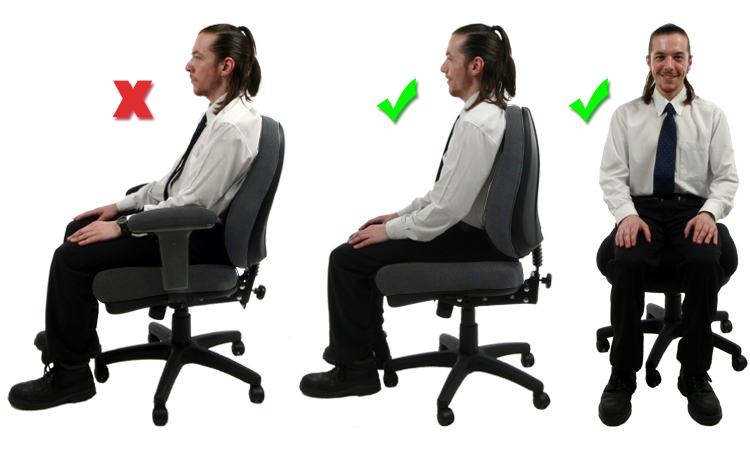
Above: Careful attention needs to be made to ensure that a chair is setup correctly.
- Introduction
- Top tips
- Position
- Type and style of chair
- Alternative keyboards
- Footrests
- Other Considerations
Introduction.
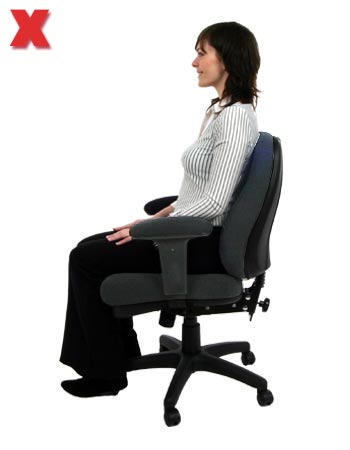
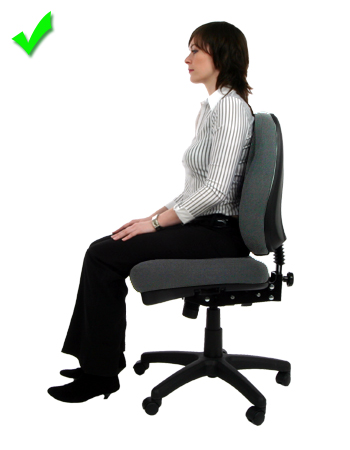
Above: Chair initially setup with incorrect back and lumbar support - then correctly setup.
A correctly adjusted chair is the starting point for healthy DSE use, as seating has a fundamental role in ensuring good posture. Chairs vary enormously in price, but even the most expensive will only help if it's been correctly set up for the person using it. Users need to be aware of the position they are aiming for as well as familiarise themselves with the chair's features.
Top tips.
- The chair height should be adjusted for elbows to be level with or above the surface of the desk. Very tall or short people will need different chairs.
- The armrests should be removed if they restrict movement.
- The back should adequately support the lumbar area of the spine.
- The seat should support the buttocks and be close enough to the keyboard to avoid stretching arms forward.
- When sitting at the workstation, make sure the torso, head, neck, shoulders and hips are straight, not twisted.
- The user should be familiar with all the chair's adjustable features.
Position.
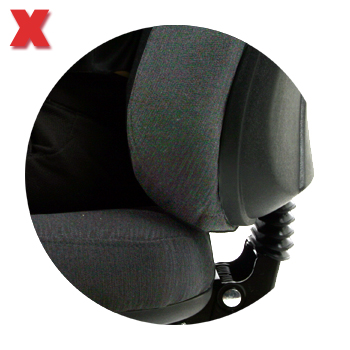
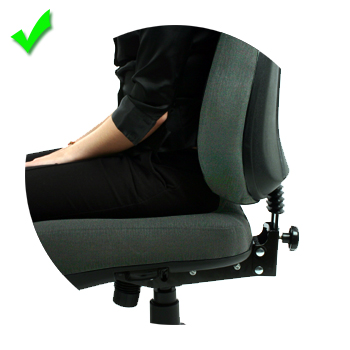
Above: A common mistake is having the lumbar support too low, pushing the pelvis forward. Ensure that the
lumbar support actually fits into your lumbar area.
- aim to sit upright with a natural curve in the spine.
- shoulders should be relaxed with the upper arms by your side and the forearms parallel with the elbows at approximately a 90 degree angle.
- wrists should be in a neutral position with the fingers positioned above the home keys.
- knees should be lower than the pelvis.
- feet should be placed firmly on the floor or on a footrest.
- there should be nothing preventing sitting correctly with the spine straight, not twisted.
Make the following adjustments to achieve this position:
- seat height so elbows are at or just above desk height.
- seat back to support the lumbar region of the spine.
- seat depth to fully support the buttocks.
- seat rake to support a comfortable upright position.
- seat position to reach the keyboard without extending arms forward.
Type and style of chair.
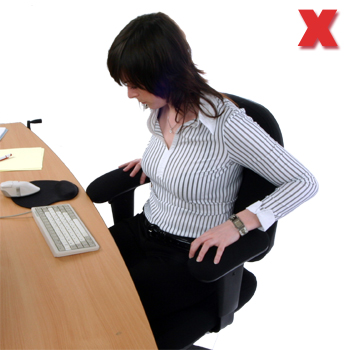
Above: Chair arms can prevent you from getting close enough to your desk for comfort.
- A standard chair with basic adjustments will meet most people's needs.
- Check for stability, castors to allow movement and adjustable back and seat heights.
- Armrests may/may not be height adjustable. Ensure they do not hit the front of an L-shaped corner desk as this will impact posture. If the height cannot be adjusted, consider removing them.
Additional features available include:
- Chairs with a rocking action, which adjusts so that as the user moves the chair moves. This can help circulation in the legs and is more comfortable when the user frequently adjusts position.
- Adjustable lumbar supports to help maintain the natural curve in the spine. This is particularly useful for those who have a deeper than average spinal curve.
- Customised chairs: depth of seat, height of back, neck rest, type of armrest, type of castor. There are also chairs that have a front pivot, seat tilt and seat that can be adjusted forwards. Consider a customised chair where there is a history of back problems or musculoskeletal disorder.
Footrests.
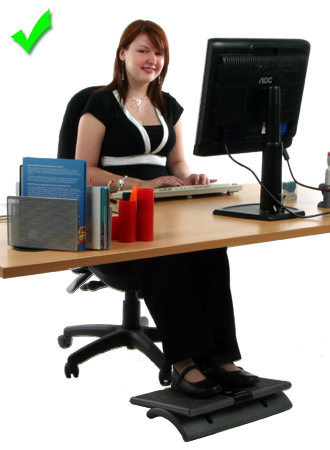
Above: A footrest should be used as and when required.
- Once the height of the chair has been correctly adjusted for workstation use, check whether the user can place their feet firmly on the floor.
- Footrests should be provided where this isn't the case. A footrest should be height adjustable to enable a 90 degree angle at the knee joint.
- Users should avoid bending their knees back and resting their feet on the spokes of the chair.
Other Considerations.
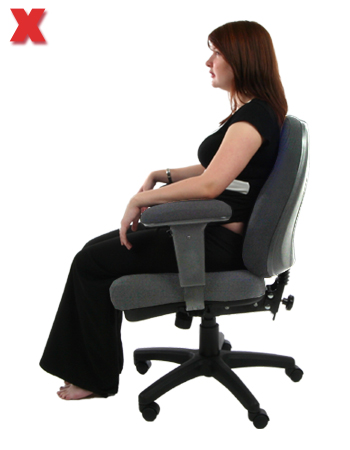
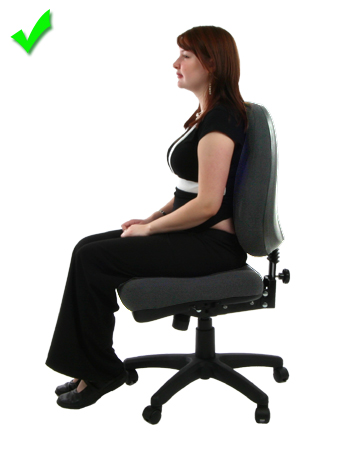
Above: Raised chairback provides correct support for higher than normal lumbar area.
Chairs for taller or shorter people.
Shorter people may find the front of the chair presses on the back of their knees or under the thighs, hindering blood flow and affecting the nerves. To compensate they may sit further forward and then slump back so their back is rounded.
A taller person may have difficulty adjusting the height of the back of the chair so that it adequately supports the lumbar area.
- Consider providing chairs that are a more suitable size.
Shared workstations.
Make sure each user knows it's important to re-adjust the chair to suit their needs at the beginning of the working day.